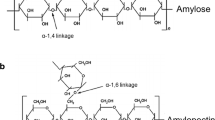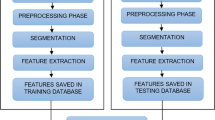Abstract
The performance of Vis-NIR techniques combined with variable select by a simple modified particle swarm optimization (PSO) algorithm for the determination of four quality parameters in soy sauce was evaluated. Compared with full-spectral support vector machine regression (Full-SVMR) and SVMR based on competitive adaptive reweighted sampling (CARS-SVM) method, the application of PSO wavelength selection provided a notably improved SVM regression model. The root-mean-square error of amino acid nitrogen, salt, total acid content, and color ratio obtained by PSO-SVMR are 0.0075 g/100 ml, 0.2176 g/100 ml, 0.0077 g/100 ml, and 0.0506 in predicted sets, respectively. The correlation coefficients of predicted sets obtained by PSO-SVMR reached 0.9997, 0.9462, 0.9996, and 0.9998, respectively. Meanwhile, a classification study constructed with principal component analysis and SVM classification model based on the feature wavelengths selected by PSO shows that Vis-NIR spectra can be used to classify soy sauce according to their brands and quality. The result showed that the Vis-NIR spectroscopy technique based on PSO wavelength selection has high potential to predict the quality parameters in a nondestructive way. This analytical tool may also contribute to the detection of fraud and mislabeling in the soy sauce market and certainly contribute to improvement in quality and reliability of the soy sauce market.





Similar content being viewed by others
References
Alves JCL, Henriques CB, Poppi RJ (2014) Classification of diesel pool refinery streams through near infrared spectroscopy and support vector machines using C-SVC and m-SVC. Spectrochim Acta A 117:389–396
Balabina RM, Safievab RZ, Lomakina EI (2010) Gasoline classification using near infrared (NIR) spectroscopy data: comparison of multivariate techniques. Anal Chim Acta 671:27–35
Bertelli D, Plessi M, Sabatini AG, Lolli M, Grillenzoni F (2007) Classification of Italian honeys by mid-infrared diffuse reflectance spectroscopy (DRIFTS). Food Chem 101:1565–1570
Cai W, Li Y, Shao X (2008) A variable selection method based on uninformative variable elimination for multivariate calibration of near-infrared spectra. Chemometr Intell Lab 90:188–194
Chang CC, Lin CJ (2011) LIBSVM: a library for support vector machines. Acm T intel Syst Tec 2:1–27
Cortes C, Vapnik V (1995) Support-vector networks. Mach Learn 20:273–297
Egidio VD, Sinelli N, Giovanelli G, Moles A, Casiraghi E (2010) NIR and MIR spectroscopy as rapid methods to monitor red wine fermentation. Eur Food Res Technol 230:947–955
Gao XL, Sun PF, Lu J, Jin Z (2013) Characterization and formation mechanism of proteins in the secondary precipitate of soy sauce. Eur Food Res Technol 237:647–654
Hoang NX, Ferng S, Ting CH, Huang WH, Chiou RYY, Hsu CK (2016) Optimizing the initial moromi fermentation conditions to improve the quality of soy sauce. LWT-Food Sci Technol 74:242–250
Jolliffe IT, Cadima J (2016) Principal component analysis: a review and recent developments. Philos Trans A Math Phys Eng Sci 374:20150202
Kennedy J, Eberhart R (1995) Particle swarm optimization In: Proceedings of IEEE International Conference on Neural Networks. Perth, Australia, pp 1942–1948
Khulal U, Zhao JW, Hu WW, Chen QH (2016) Nondestructive quantifying total volatile basic nitrogen (TVB-N) content in chicken using hyperspectral imaging (HSI) technique combined with different data dimension reduction algorithms. Food Chem 197:1191–1199
Kutsanedzie FYH, Chen QH, Hassan MM, Yang MX, Sun H, Rahman MH (2018) Near infrared system coupled chemometric algorithms for enumeration of total fungi count in cocoa beans neat solution. Food Chem 240:231–238
Leardi R, Seasholtz M, Pell R (2002) Variable selection for multivariate calibration using a genetic algorithm: prediction of additive concentrations in polymer films from Fourier transform-infrared spectral data. Anal Chim Acta 461:189–200
Li HD, Liang YZ, Xu QS, Cao DS (2009) Key wavelengths screening using competitive adaptive reweighted sampling method for multivariate calibration. Anal Chim Acta 648:77–84
Li JB, Zhao CJ, Huang WQ, Zhang C, Peng YK (2014) A combination algorithm for variable selection to determine soluble solid content and firmness of pears. Anal Methods 6:2170–2180
Li HH, Chen QH, Zhao JW, Wu MZ (2015) Nondestructive detection of total volatile basic nitrogen (TVB-N) content in pork meat by integrating hyperspectral imaging and colorimetric sensor combined with a nonlinear data fusion. LWT-Food Sci Technol 63:268–274
Liu T, Bao CF, Ren YL (2011) Determination of quality properties of soy sauce by support vector regression coupled with SW-NIR spectroscopy. Chem Res Chinese U 27:385–391
Norgaard L, Saudland A, Wagner J, Nielsen J, Munck L, Engelsen S (2000) Interval partial least-squares regression (iPLS): a comparative chemometric study with an example from near-infrared spectroscopy. Appl Spectrosc 54:413–419
Oguntunde PG, Lischeid G, Dietrich O (2018) Relationship between rice yield and climate variables in southwest Nigeria using multiple linear regression and support vector machine analysis. Int J Biometeorol 62:459–469
Rinnan A, Van den Berg F, Engelsen SB (2009) Review of the most common pre-processing techniques for near-infrared spectra. Trends Anal Chem 28:1201–1222
Santos CAD, Lopo M, Páscoa RNMJ, Lopes JA (2013) A review on the applications of portable near-infrared spectrometers in the agro-food industry. Appl Spectrosc 67:1215–1233
Santos DAD, Lima KPD, Cavalcante V, Coqueiro A, Consolin MFB, Filho NC, Março PH, Valderrama P (2018) Multiproduct, Multicomponent and Multivariate Calibration: a case study by using Vis-NIR spectroscopy. Food Anal Methods 11:1915–1919
Shamsipur M, Zare-Shahabadi V, Hemmateenejad B, Akhond M (2006) Ant colony optimization, a powerful tool for wavelength selection. J Chemom 20:146–157
Shen Q, Jing JH, Shen GL, Yu RQ (2004) Modified particle swarm optimization algorithm for variable selection in MLR and PLS modeling: QSAR studies of antagonism of angiotensin II antagonists. Eur J Pharm Sci 22:145–152
Shi WM, Kong W, Tao QB, Guo JJ, Xia MJ, Shen Q, Ye BX (2013) An adaptive wavelength interval selection by modified particle swarm optimization algorithm: simultaneous spectral or differential pulse voltammetric determination of multiple components with overlapping peaks. J Anal Chem 68:630–638
Sorol N, Arancibia E, Bortolato SA, Olivieri AC (2010) Visible/near infrared-partial least-squares analysis of Brix in sugar cane juice: a test field for variable selection methods. Chemometr Intell Lab 102:00–109
Tange RI, Rasmussen MA, Taira E, Bro R (2017) Benchmarking support vector regression against partial least squares regression and artificial neural network: effect of sample size on model performance. J Near Infrared Spectrosc 25:381–390
Tudu B, Jana A, Metla A (2009) Electronic nose for black tea quality evaluation by an incremental RBF network Sens. Actuat B-Chem 138:90–95
Xu H, Liu ZC, Cai WS, Shao XG (2009) A wavelength selection method based on randomization test for near-infrared spectral analysis. Chemometr Intell Lab 97:189–193
Xu J, Huang FR, Li YP, Chen Z, Wang Y (2015) Rapid detection of total nitrogen content in soy sauce using NIR spectroscopy. Czech J Food Sci 33:518–522
Xue L, Cai J, Jin L, Liu MH (2012) Application of particle swarm optimization (PSO) algorithm to determine dichlorvos residue on the surface of navel orange with Vis-NIR spectroscopy. Procedia Engineering 29:4124–4128
Ye SF, Wang D, Min SG (2008) Successive projections algorithm combined with uninformative variable elimination for spectral variable selection. Chemometr Intell Lab 91:194–199
Zhang X, Li W, Yin B, Chen WZ, Kelly DP, Wang XX, Zheng KY, Du YP (2013) Improvement of near infrared spectroscopic (NIRS) analysis of caffeine in roasted Arabica coffee by variable selection method of stability competitive adaptive reweighted sampling (SCARS). Spectrochim Acta A 114:350–356
Zhao JW, Ouyang Q, Chen QS, Lin H (2012) Simultaneous determination of amino acid nitrogen and total acid in soy sauce using near infrared spectroscopy combined with characteristic variables selection. Food Sci Technol Int 19:305–314
Zhao GZ, Yao YP, Wang XH, Hou LH, Wang CL, Cao XH (2013) Functional properties of soy sauce and metabolism genes of strains for fermentation. Int J Food Sci Technol 48:903–909
Funding
The work was financially supported by the National Natural Science Foundation of China (Grant no. 21275039), Natural Science Foundation of Henan Province of China (Grant no. 182102310681), Grain & Corn Engineering Technology Research Center, State Administration of Grain (Grant no. GA2017008), and Foundation of Henan University of Technology (Grant no. 2014JCYJ08).
Author information
Authors and Affiliations
Corresponding author
Ethics declarations
Conflict of Interest
Leqian Hu declares that he has no conflict of interest. Chunling Yin declares that she has no conflict of interest. Shuai Ma declares that he has no conflict of interest. Zhimin Liu declares that she has no conflict of interest.
Ethical Approval
This article does not contain any studies with human and animal subjects.
Informed Consent
Not applicable.
Additional information
Publisher’s Note
Springer Nature remains neutral with regard to jurisdictional claims in published maps and institutional affiliations.
Electronic Supplementary Material
ESM 1
(DOCX 24 kb)
Rights and permissions
About this article
Cite this article
Hu, L., Yin, C., Ma, S. et al. Vis-NIR spectroscopy Combined with Wavelengths Selection by PSO Optimization Algorithm for Simultaneous Determination of Four Quality Parameters and Classification of Soy Sauce. Food Anal. Methods 12, 633–643 (2019). https://doi.org/10.1007/s12161-018-01407-1
Received:
Accepted:
Published:
Issue Date:
DOI: https://doi.org/10.1007/s12161-018-01407-1




